"These 3 Things Will Change Your Life"
Modern Manifestos and Digital Didacticism by Dagny Tepper
I’ll admit it: I’m constantly baited into the corniest corners of social media. You may not know it – as now that likes on Instagram can be seen by your followers, I abuse the save button. But every time you see the most annoying, self-righteous, three-step bullshit or podcaster quote on your explore page, just know I’m the target audience. If you don’t know what I’m talking about, a) good for you, probably b) there’s multiple, deep pockets of social media dedicated to easy to consume advice, often distilled to three bullet points or a 15-second clip. In this universe, the nuance and complexity of real-life issues fade away, and suddenly, achieving your goals, protecting your relationships, and living your best life is often just a screenshot or save away. Sounds great right? It does to me apparently.
Now this wouldn’t mean as much if I were a person who digested this type of content across the board, but I’m not. While my best friend soaks up Dolly Alderton’s didactic language and Steven Bartlett’s Diary of a CEO, I’m locked into a weird loop of two songs by The Fray. I’ve never been into people offering universal truths or prescriptive mentalities. So why, today, is my saved folder dominated by the most cookie-cutter, saturated iterations of this? Sam Altmann, what the fuck are you doing here?
The truth is, the circulation of snackable, ‘life-altering’ content is way more than a quirky trend. It’s an embodiment of a much larger, manifesto-fication of personal beliefs in the digital era, where advice becomes typed and simplified for mass consumption. Of course, simplified forms of advice are not, in themselves, new. All the way back since The Ten Commandments, to Stephen Covey’s "The 7 Habits of Highly Effective People", digestible tools have always existed to condense teachings into a small number of principles for easier understanding and memorization. But as the digisphere and its players evolve, what happens when books have turned into BuzzFeed listicles, listicles into text-images, and now, text-images into simplified, swipable and sermonic steps?
The Pyramid Scheme of Personal Branding
Digital didacticism – step-by-steps, quotes on a page, even hope-core – spread cyclically, begging the question, who or what feeds it? Much of the time, major players are repackaging pre-existing content, like post-game interviews and Steve Jobs commencement speeches, into their most digestible form. But lesser known influencers and entrepreneurs also disseminate their own advice by positioning themselves as authorities—creating a cult of personality around their supposed ‘wisdom’. It’s a digital-age pyramid scheme, where individuals at the ‘top’ profit from selling simplified, curated advice that promises to unlock some sort of personal transformation. These people don't just claim authority; they also tend to ‘teach’ and/or ‘validate’ the authority of others. Take Ali Abdaal. The self-proclaimed “Doctor turned entrepreneur, and the world’s most-followed productivity expert 😜”, not only churns out an endless stream of tips, frameworks, and “secrets” to success, but also teaches others how to do the same. He offers a course on his website called ‘The YouTuber Academy’ where he actively instructs aspiring influencers on how to brand themselves as knowledge authorities.
The creative industry is nowhere near safe. Flooding our feeds are Art Directors, Strategists, Designers, and more packaging their perspectives into their most savable iterations. Dot Dot Dot recently published a piece, on “The Thought Leader Gold Rush” – in which personal brands are based on ‘insights’ rather than ‘aesthetics’. I’ll give it to the creatives, when it comes to social media they, predictably, still effectively harness aesthetics. But that doesn’t make the mass dissemination of over-simplified ‘need-to-knows’ any less insidious. ‘3 WEBSITE EVERY ART DIRECTOR MUST KNOW’. ‘5 VISUAL ARCHIVES FOR DESIGNERS.’ ‘4 BOOKS TO EXPAND YOUR CREATIVE THINKING’. Or – the fact that creative professionals, just like ‘productivity experts’ – lead programs teaching others to do the same thing.
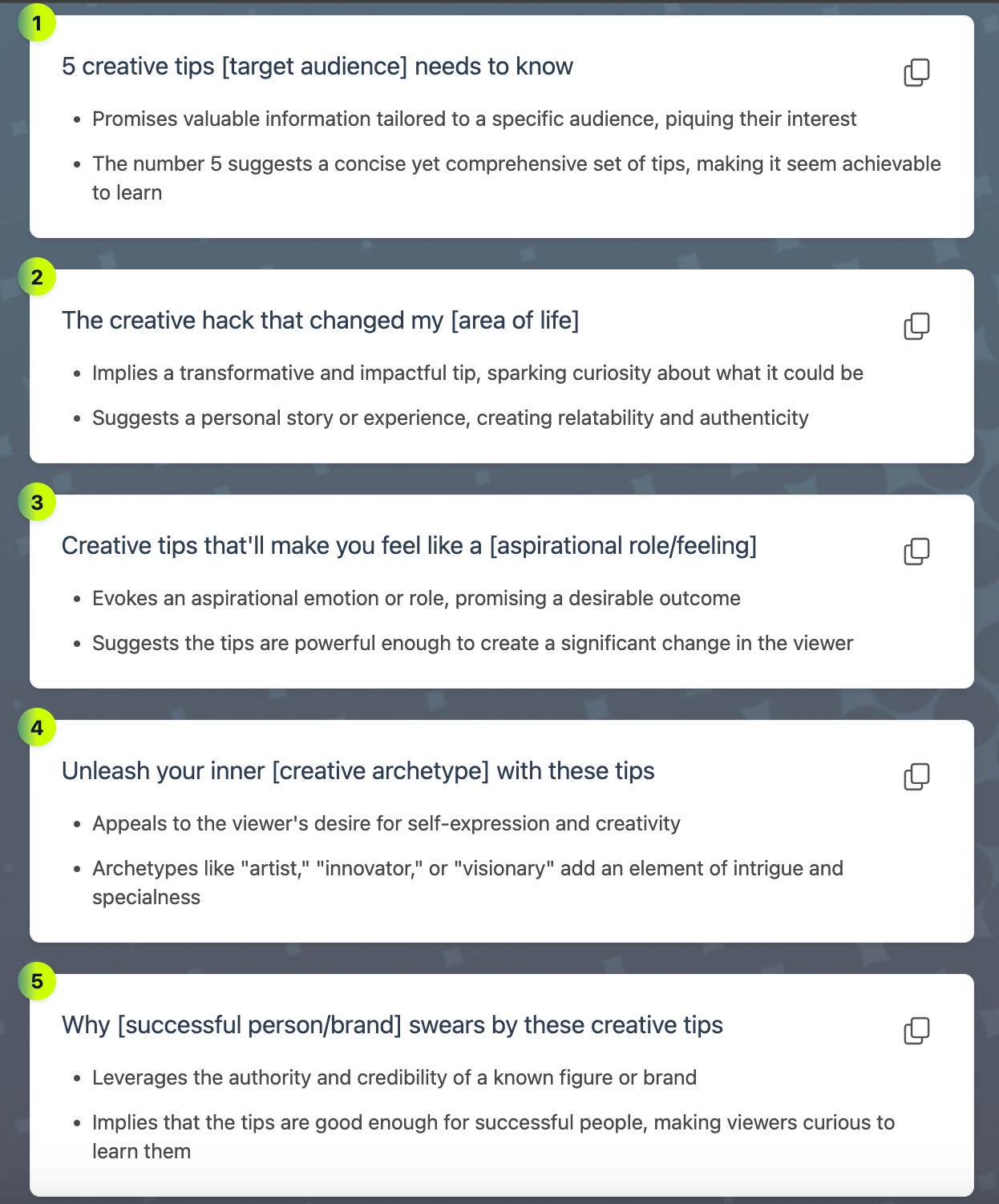
The Evolution of the Digital ‘Save’
Central to the conversation of what makes information so ‘snackable’ in the digital age, is how it’s digested. Enter: the evolution of the digital ‘save’. Of course, save buttons online started as bookmarking tools. Such tools are absolutely fundamental to the beauty of the web – I even feel a nostalgia towards my origins with internet Bookmarks, a list complete with Stardoll and my primary school’s website. But over time, the role of the bookmark, or save, warped into something more finite, and more deceitful. We don’t revisit these saves the same way we used to. In fact, think about how many, especially over social media, you never revisit. We click the save button, completing the virtual act, and quite knowingly, don’t return. Why?
The save button tricks us into feeling like we’ve engaged with the content without actually reflecting on it, applying it to our lives, or sometimes even letting it entertain us. Since platforms reward those whose content gets saved, creators forgo shame, regularly rounding off content with a “Save this for later!”. But what do we get in return? A digital junk drawer that can weigh us down in the same capacity as physical clutter. There are other architectural features of the digital experience that contribute to this, such as linearity – something taught to me by its adversaries at SOOT – but until that’s replaced by more innovative technology, our archives remain prime real estate for burying media such as snappy motivational quotes, life hacks, and montages.
Cue The Visuals: Repackaged Sameness
The reason the same corny ideas cycle endlessly online isn’t just because people love bite-sized wisdom—it’s because graphic design can breathe new life into the same tired advice. The aesthetic evolution of a message—whether it’s slapped onto a hope-core edit, stock image or Canva template — makes it infinitely recyclable. Take the same three-step formula for success: at first, it’s a text post on Twitter. Next, it’s stitched over an Andrew Huberman clip. Then it’s repackaged into a yearnpost style Instagram carousel. Then it reappears as a TikTok montage of LeBron James training, scored to Hans Zimmer. Even if this process doesn’t happen on a conscious level (like, I’m not trying to say some guy sees that whole thing through in his basement, but who knows!), old advice constantly feels new.
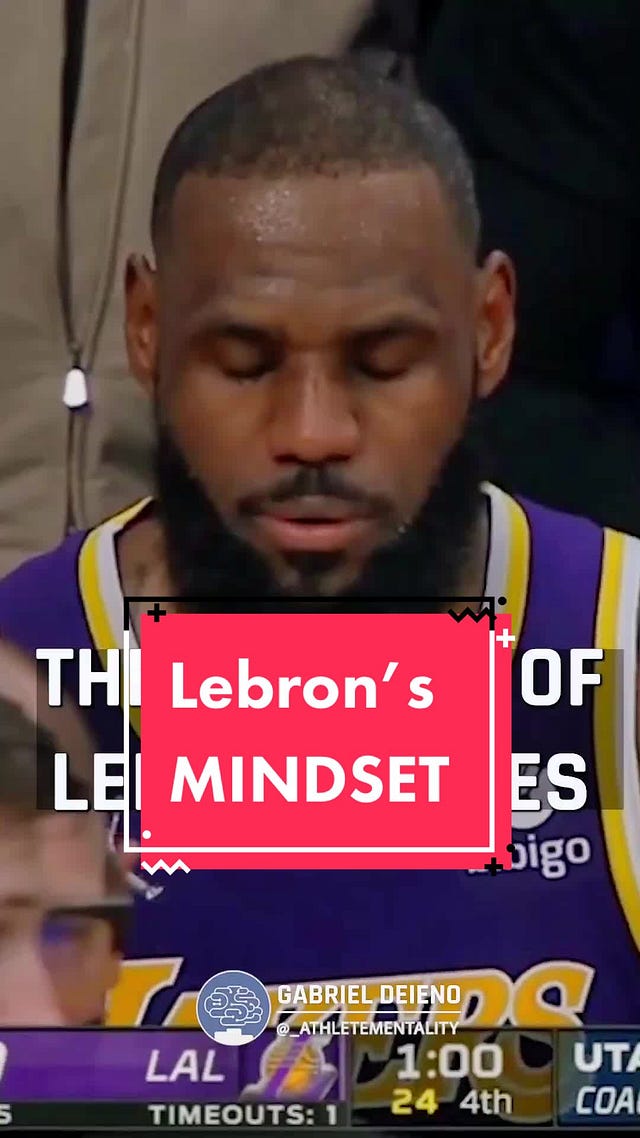
 Tiktok failed to load.
Tiktok failed to load.Enable 3rd party cookies or use another browser
And AI has only accelerated this process. ChatGPT and other large language models can instantly reformat a single idea into dozens of styles—a tweet, LinkedIn post, podcast script, you name it, literally, and AI-generated images and voiceovers churn out hyper-optimized, algorithm-friendly versions of your desired output. With the visual component, messages needn’t just circulate – they can now mutate into every possible variation, appealing to every niche.
So what now?
The digitally didactic self-improvement space might be an industrialized content farm, but knowledge is power. Or I don’t know, I just got that from a motivational post. However one thing we do know is that real wisdom is usually not frictionless. It’s hard to seek out, hard to understand, and something that reveals itself in time. However, if you do have a habit of getting cozy with this type of content, you’re not alone. Three things that will change your life, though:
Wrestle with ideas before saving them for later
If an idea is truly indispensable, we won’t need a folder to remind us.
This format really is intoxicating isn’t it
That’s all for this week folks!
Words by Dagny Tepper. Cover image by Swaggywife via Instagram. Edited by Sui Donovan. Brought to you by @morning.fyi.





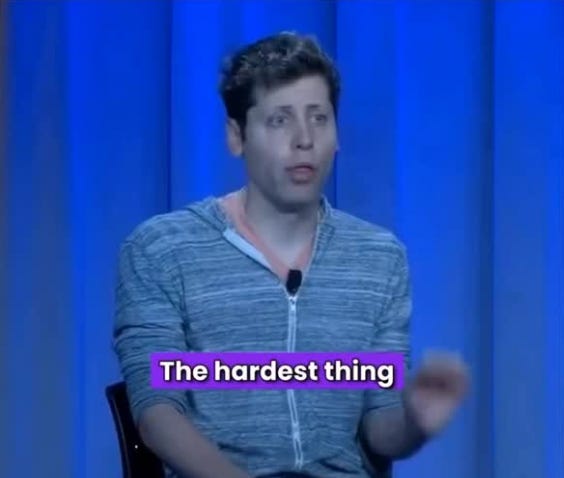
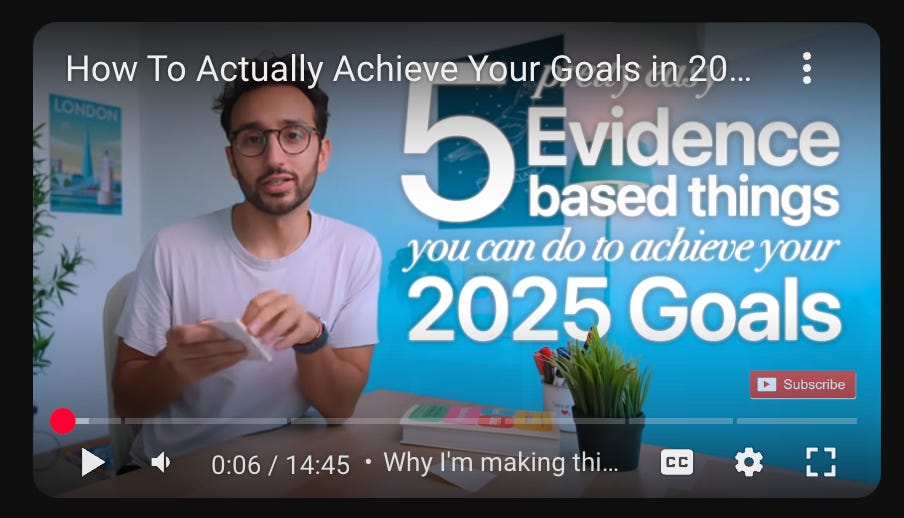
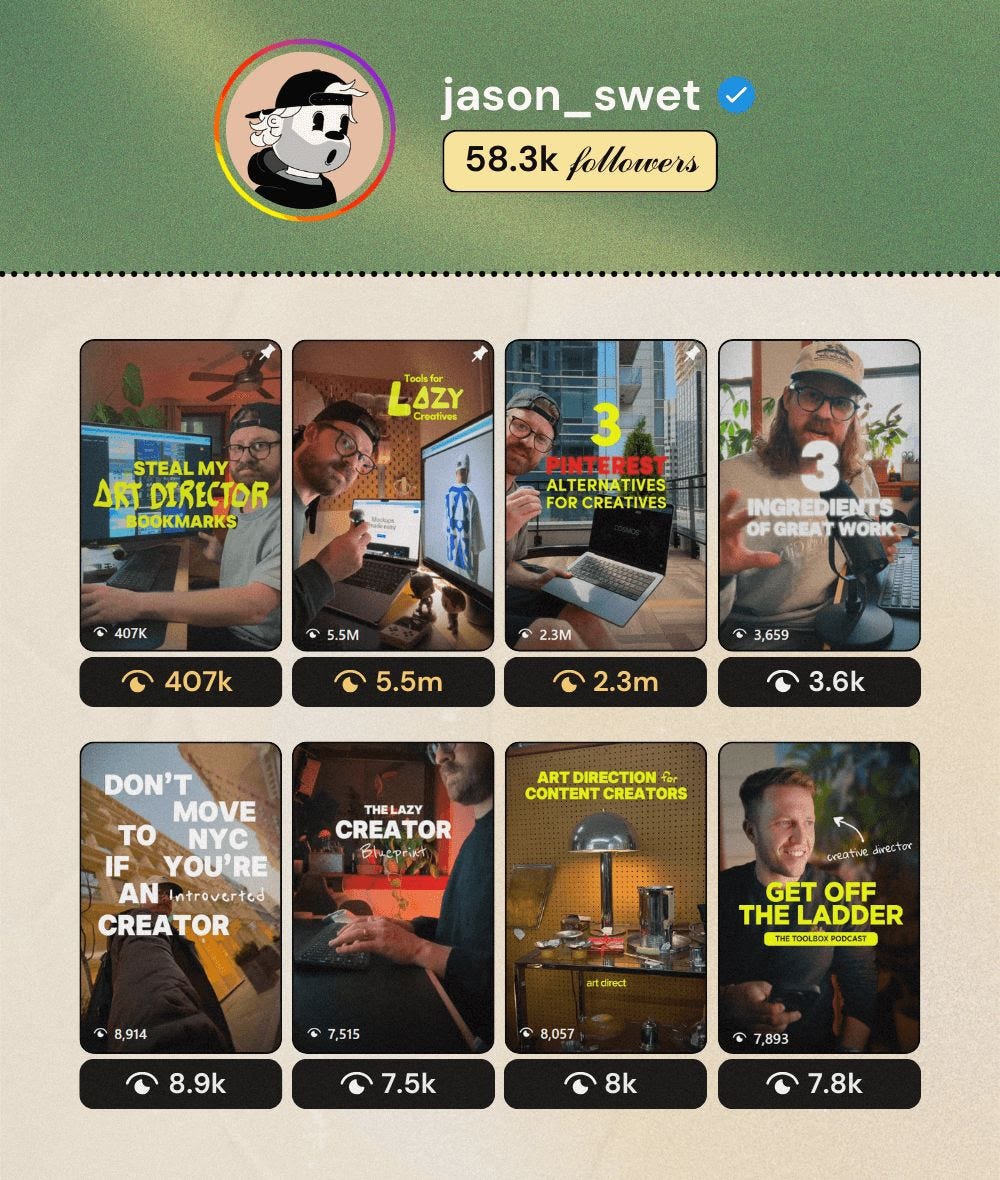
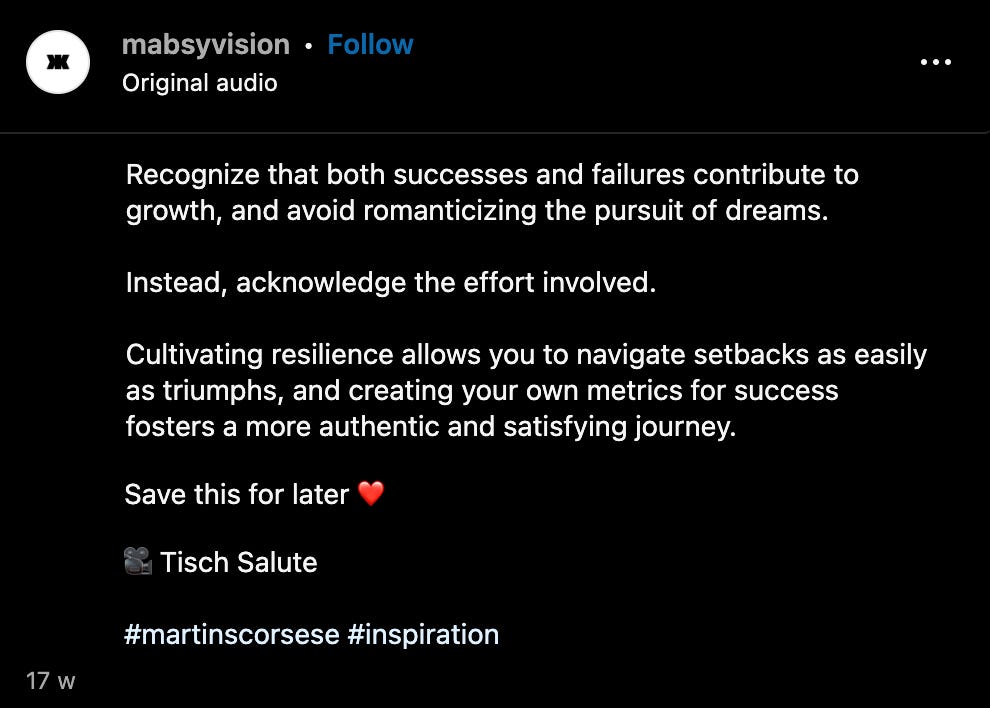
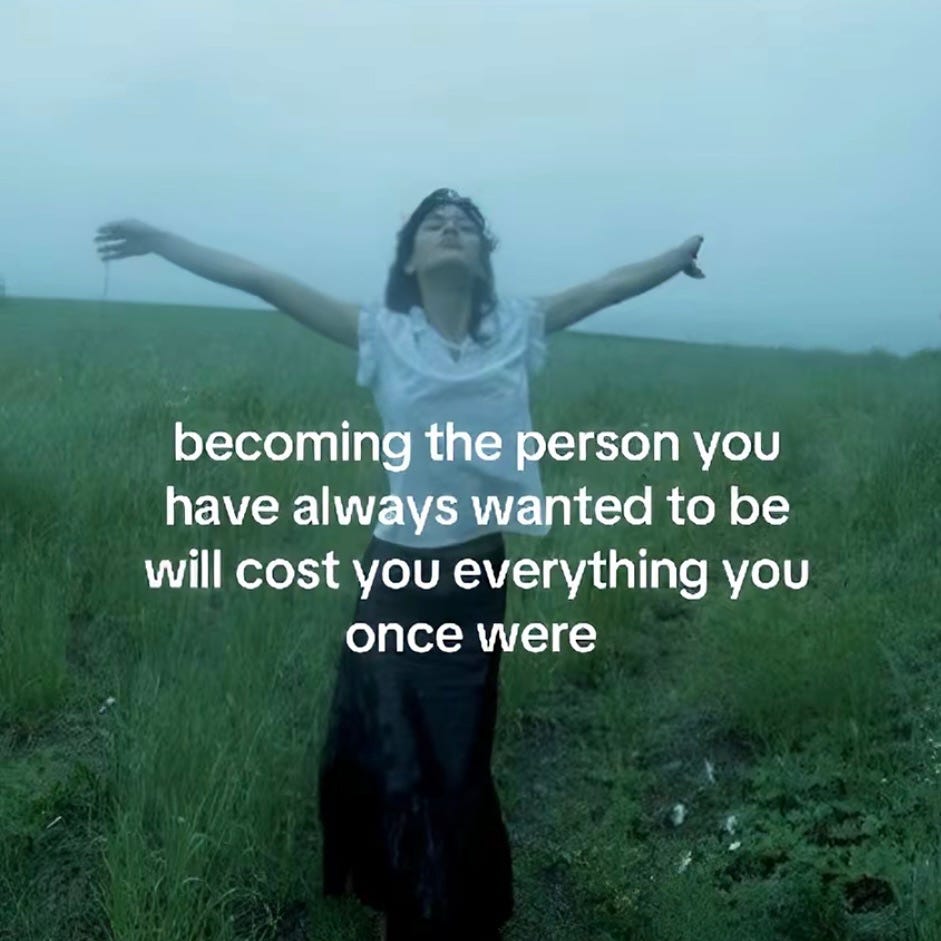
'Scored to Hans Zimmer' is so painfully on point 😂 the Time theme from Inception and Interstellar come to mind.
Thank you for the laugh. This was great!